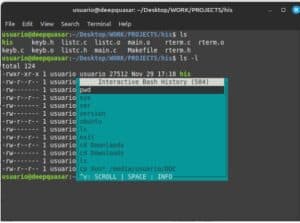Creating an effective IT budget is essential for modern businesses seeking to allocate resources efficiently, support strategic goals, and maintain financial health. In this context, understanding the differences between capital expenditures (CapEx) and operational expenditures (OpEx) is crucial for making informed financial decisions.
Understanding CapEx (Capital Expenditures)
CapEx refers to funds used by a business to acquire, upgrade, and maintain physical assets such as hardware, software licenses, and IT infrastructure. These are long-term investments, and the costs are capitalized on the balance sheet, meaning they are spread over the useful life of the asset. The main advantage of CapEx is that the business owns the assets, giving it control over how they are used and customized.
CapEx also offers tax advantages through depreciation, allowing businesses to spread the cost over the asset’s life, reducing taxable income over several years. CapEx is particularly beneficial for companies with stable, long-term IT needs and enough capital to invest in substantial purchases.
However, CapEx comes with significant downsides. The high upfront costs for acquiring and implementing new technology can strain cash flow, making it difficult for businesses to invest in other critical areas. Additionally, as assets depreciate over time, they lose value, and companies may need to replace them periodically to keep up with technological advancements. This potential for obsolescence is a key consideration, as rapid tech evolution can render expensive assets outdated sooner than expected.
Understanding OpEx (Operating Expenses)
OpEx refers to the ongoing costs for running a business, such as subscription services, cloud computing, and leasing equipment. These costs are fully deductible in the year they are incurred, providing immediate tax benefits. OpEx is especially attractive for companies that need to adapt quickly to new technologies and market conditions.
With OpEx, companies can avoid the high upfront costs associated with CapEx, opting instead for smaller, more manageable payments. This flexibility and scalability make OpEx a popular choice for businesses in fast-changing industries or those with limited capital.
One of the main advantages of OpEx is that it enables more accurate budget planning. By spreading costs over time, businesses can better manage their budgets and avoid the financial strain of large one-time expenses. Additionally, OpEx allows businesses to remain agile, scaling services up or down as needed without major financial commitments. This adaptability is crucial in environments where technology and business needs are constantly evolving.
However, the ongoing nature of OpEx can also be a drawback. Continuous payments can add up over time, leading to higher total costs compared to capital investment. Additionally, relying on external providers for essential services may create dependencies that limit the company’s control over its IT infrastructure. This reliance on service providers can also pose risks if the provider faces operational issues or changes its service terms.
CapEx vs. OpEx: Key Differences
The decision between CapEx and OpEx involves several key differences that impact a company’s financial strategy and operations. CapEx requires a significant upfront investment, which immediately affects cash flow, while OpEx spreads costs over time, making cash flow management more predictable. This distinction in cash flow implications can influence a company’s ability to invest in other areas and manage its overall financial health.
From an accounting perspective, CapEx is capitalized and depreciated over the asset’s life, while OpEx is expensed in the year it occurs. This means CapEx investments appear as assets on the balance sheet, contributing to a company’s equity, while OpEx affects the income statement by reducing taxable income in the year incurred. These accounting treatments have implications for financial reporting and tax obligations, influencing decisions on which type of spending is most beneficial.
Another key difference lies in the impact on financial statements. CapEx investments increase a company’s assets and equity, potentially improving its financial ratios and solvency. However, they also increase long-term liabilities if financed through debt. OpEx, on the other hand, directly affects the income statement by reducing net income, impacting profitability metrics but providing immediate tax relief. These differences in financial impact and accounting treatment are critical considerations for companies evaluating their IT budgeting strategies.
When to Choose CapEx
CapEx is advantageous for businesses with long-term, stable IT needs and sufficient capital for substantial investments. Industries with predictable technology requirements and less frequent upgrades often prefer CapEx. For example, a manufacturing company investing in its own hardware to control production processes might benefit from a CapEx strategy. Additionally, businesses that prioritize ownership of assets and control over their IT infrastructure, such as those in regulated industries where compliance and security are paramount, may find CapEx more suitable.
Another scenario where CapEx proves beneficial is when businesses seek to leverage the tax benefits of asset depreciation. By spreading the cost of an asset over its useful life, companies can reduce taxable income, resulting in potential tax savings over time. This long-term investment approach fits well with businesses that have the financial stability to manage high upfront costs and the strategic foresight to capitalize on asset ownership.
Benefits of CapEx:
- Businesses have direct ownership and control over assets.
- Asset depreciation offers tax benefits over time.
- Ideal for stable, long-term IT needs with predictable technology cycles.
Drawbacks of CapEx:
- High upfront investment can strain cash flow.
- Assets lose value over time and may require replacement.
- Rapid tech advancements may lead to early obsolescence.
When to Choose OpEx
OpEx is ideal for companies in fast-changing industries or with limited capital. It provides flexibility and scalability, essential for businesses that need to quickly adapt to new technologies. Startups and companies in tech-driven industries, where constant innovation is key, often favor OpEx. For example, a tech company using cloud services to scale operations without significant upfront costs benefits from the OpEx model. OpEx is also beneficial for companies that prioritize maintaining an agile operating model, avoiding the complexities of managing and maintaining physical assets.
Additionally, companies experiencing rapid growth or frequent changes in IT needs can benefit from the flexibility offered by OpEx. By leveraging subscription services or leasing equipment, businesses can quickly adjust their IT infrastructure to meet evolving demands without incurring large capital expenditures. This agility is crucial in competitive markets where staying ahead of technological advancements can provide a significant advantage.
Benefits of OpEx:
- Easier to budget with smaller, regular payments.
- Adaptable to changing needs and technology advancements.
- Simplifies budgeting with consistent, manageable costs.
Drawbacks of OpEx:
- Continuous payments can add up over time.
- Long-term operational costs may exceed initial CapEx savings.
- Dependence on external service providers for critical services.
A Hybrid Approach
Many businesses adopt a hybrid model that combines CapEx and OpEx, leveraging the advantages of both. This approach allows companies to invest in critical long-term assets while utilizing OpEx for scalable, flexible solutions. For example, a company may purchase essential servers (CapEx) and subscribe to cloud-based software (OpEx) for greater flexibility. The hybrid approach offers a balanced strategy that maximizes the benefits of both expenditure types, providing financial flexibility and strategic alignment.
Implementing a hybrid model can help businesses better manage cash flow, distributing large capital expenses while benefiting from the predictability and scalability of operational expenditures. This approach is especially useful for organizations with diverse IT needs that require a combination of stable long-term investments and short-term adaptable solutions.
Factors to Consider When Deciding
- Company size, growth stage, and financial health: Larger companies with stable cash flow may prefer CapEx, while smaller, fast-growing companies might lean towards OpEx due to capital limitations.
- IT infrastructure needs and technology lifecycle: Businesses with stable, long-term IT needs may favor CapEx, while those in rapidly evolving industries may opt for OpEx to stay current with technology trends.
- Risk tolerance and management preferences: Companies that prioritize control over their IT assets may choose CapEx, while those comfortable with outsourcing critical services may find OpEx more advantageous.
In Summary
Choosing between CapEx and OpEx for IT budgeting depends on your company’s specific needs, financial strategy, and market conditions. By understanding the differences and evaluating your unique situation, you can align your IT budget approach with your overall business goals.
Whether you opt for CapEx, OpEx, or a hybrid model, effective financial planning ensures that your IT infrastructure supports your long-term success. Careful consideration of CapEx and OpEx options enables companies to make informed decisions that enhance operational efficiency and financial stability.












